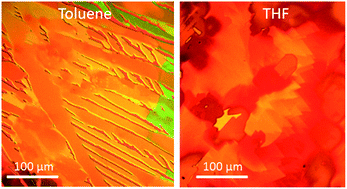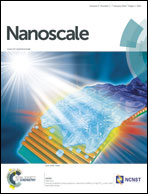Solvent-type-dependent polymorphism and charge transport in a long fused-ring organic semiconductor†
Abstract
Crystalline polymorphism of organic semiconductors is among the critical factors in determining the structure and properties of the resultant organic electronic devices. Herein we report for the first time a solvent-type-dependent polymorphism of a long fused-ring organic semiconductor and its crucial effects on charge transport. A new polymorph of 5,11-bis(triethylsilylethynyl)anthradithiophene (TES ADT) is obtained using solvent-assisted crystallization, and the crystalline polymorphism of TES ADT thin films is correlated with their measured hole mobilities. The best-performing organic thin film transistors of the two TES ADT polymorphs show subthreshold slopes close to 1 V dec−1, and threshold voltages close to zero, indicating that the density of traps at the semiconductor–dielectric interface is negligible in these devices and the observed up to 10-fold differences in hole mobilities of devices fabricated with different solvents are largely resultant from the presence of two TES ADT polymorphs. Moreover, our results suggest that the best-performing TES ADT devices reported in the literature correspond to the new polymorph identified in this study, which involves crystallization from a weakly polar solvent (such as toluene and chloroform).


 Please wait while we load your content...
Please wait while we load your content...